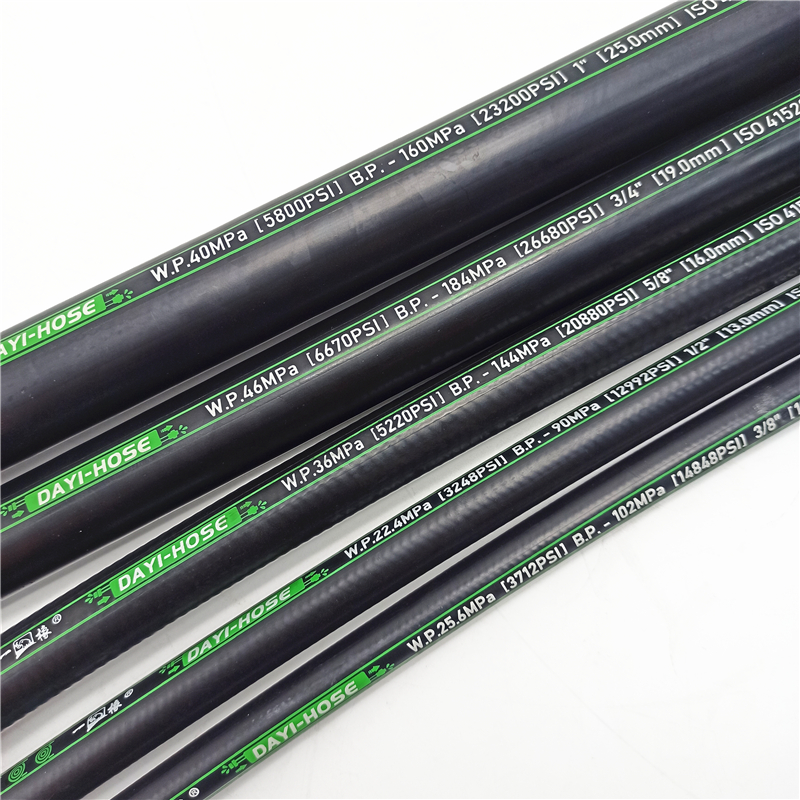335345435
ديسمبر . 15, 2024 15:17 Back to list
Different Categories of Hydraulic Pipes and Their Applications
Types of Hydraulic Pipes A Comprehensive Overview
Hydraulic systems are crucial components in various industries, including construction, manufacturing, transportation, and aerospace. The efficiency and reliability of these systems heavily depend on the quality of hydraulic pipes used. Hydraulic pipes are designed to transport hydraulic fluids under high pressure, and choosing the right type of pipe is essential for optimal system performance. In this article, we will explore the different types of hydraulic pipes, their characteristics, and their applications.
1. Steel Pipes
Steel pipes are among the most widely used types of hydraulic pipes. Known for their strength and durability, steel pipes can withstand high pressures without compromising integrity. They are typically made from various grades of steel, and the choice depends on the specific application requirements. Carbon steel pipes are common due to their excellent tensile strength and resistance to deformation. However, they may require protective coatings to prevent corrosion, especially in harsh environments.
Applications Steel pipes are commonly used in heavy machinery, hydraulic presses, and industrial equipment. Their robustness makes them suitable for high-pressure applications in industries such as oil and gas, construction, and manufacturing.
Stainless steel pipes are another popular option in hydraulic systems. They are known for their exceptional resistance to corrosion and high temperatures. The use of chromium in stainless steel creates a protective layer that prevents rust and degradation, making these pipes ideal for environments where moisture and chemicals are present.
Applications Stainless steel pipes are often used in food processing, pharmaceuticals, and chemical industries, where cleanliness and resistance to contamination are critical. They are also employed in high-temperature hydraulic systems due to their ability to maintain integrity under extreme conditions.
3. Aluminum Pipes
Aluminum pipes are lightweight and offer commendable resistance to corrosion. They are less dense than steel, making them easier to handle and install. While they may not match the strength of steel, aluminum pipes can still handle moderate pressures and are often used in applications where weight savings are essential.
types of hydraulic pipes

Applications Aluminum pipes are frequently used in mobile hydraulic systems, aerospace applications, and automotive industries. Their lighter weight helps improve fuel efficiency and overall performance in vehicles.
4. Plastic Pipes
Plastic pipes, particularly those made from materials like polyethylene (PE) and polyvinyl chloride (PVC), are increasingly popular in hydraulic applications. They are resistant to corrosion and can be manufactured to be flexible or rigid, depending on the requirements. Plastic pipes are also lightweight and can be easily cut and joined, contributing to faster installation times.
Applications Plastic pipes are commonly used in hydraulic systems conveying fluids at lower pressures. They are often found in agricultural applications, irrigation systems, and in industries where chemical resistance is necessary.
5. Composite Pipes
Composite pipes combine materials for enhanced performance. These pipes typically feature a plastic core reinforced with layers of fiber or metal, providing strength and flexibility. Composite pipes are engineered to withstand high pressure while maintaining low weights.
Applications These pipes are gaining traction in aerospace and high-performance automotive applications due to their ability to reduce weight while providing excellent strength and pressure handling capability.
Conclusion
Selecting the right hydraulic pipes is essential for ensuring the efficiency and safety of hydraulic systems. Steel, stainless steel, aluminum, plastic, and composite pipes each have their unique advantages and applications. Understanding these differences empowers engineers and designers to choose the most suitable material for their specific needs, ultimately leading to improved performance and system longevity. As technology continues to advance, it is likely that innovations in hydraulic pipe materials and designs will further enhance the capabilities of hydraulic systems across various industries.
-
SAE 100 R17 Black Smooth Cover Hydraulic Hose
NewsMar.07,2025
-
SAE 100 R17 Black Smooth Cover Hydraulic Hose
NewsMar.07,2025
-
SAE 100 R17 Black Smooth Cover Hydraulic Hose
NewsMar.07,2025
-
SAE 100 R17 Black Smooth Cover Hydraulic Hose
NewsMar.07,2025
-
SAE 100 R17 Black Smooth Cover Hydraulic Hose
NewsMar.07,2025
-
steel wire braided hydraulic hose
NewsMar.07,2025



